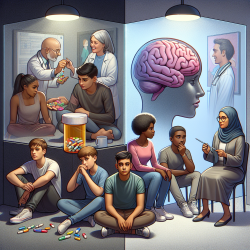As educators and practitioners, it's crucial to stay updated with the latest research to provide the best care for our students. The 2022 Obesity Medicine Association (OMA) clinical practice statement, "Social consequences and genetics for the child with overweight and obesity," offers invaluable insights into the multifaceted nature of childhood obesity. This blog will explore how to implement these findings in your practice, enhancing your skills and encouraging further research.
Understanding Genetic Factors
Childhood obesity often has genetic underpinnings that can influence a child's weight and overall health. Understanding these genetic factors can help reduce stigma and promote acceptance of medical interventions. Here are some key takeaways:
- Recognize common genetic conditions like Prader-Willi syndrome, Bardet-Biedl syndrome, and others.
- Genetic screening can identify underlying causes and guide personalized treatment plans.
- Genetic knowledge can shift the focus from blame to medical understanding, fostering a supportive environment for the child and their family.
Addressing Social Consequences
Children with obesity often face social challenges that can impact their mental and physical health. The OMA statement highlights several areas to focus on:
- Adverse Childhood Experiences (ACEs): These traumatic events can lead to chronic stress and obesity. Incorporate trauma-informed care principles to support these children effectively.
- Weight-Based Victimization (WBV): This form of bullying can have severe psycho-social and physical consequences. Educate peers, parents, and staff about the impact of WBV and implement supportive strategies.
- Racism and Gender Diversity: These factors can exacerbate stress and obesity. Be mindful of these dynamics and offer inclusive, supportive care.
Implementing Trauma-Informed Care
Trauma-informed care (TIC) is essential for children who have experienced ACEs or WBV. TIC involves understanding the broad impact of trauma and integrating this knowledge into your practice. Here are some practical steps:
- Screen for trauma at every visit and recognize the signs and symptoms.
- Provide coordinated responses that include family and community resources.
- Promote a culture of TIC in your organization to prevent re-traumatization.
Encouraging Further Research
While the OMA statement provides a comprehensive overview, ongoing research is crucial. Encourage your team to stay informed about new developments and consider participating in research studies to contribute to the growing body of knowledge on childhood obesity.
To read the original research paper, please follow this link: Social consequences and genetics for the child with overweight and obesity: An obesity medicine association (OMA) clinical practice statement 2022.










